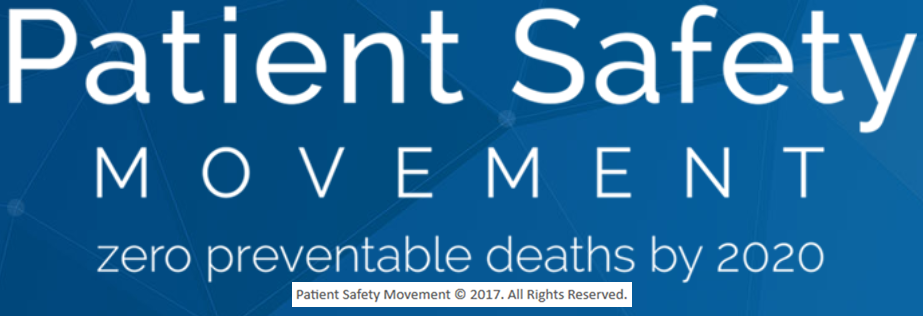
N.B. — This post is based on one of the continuously expanding roster of Actionable Patient Safety Solutions (APSS) a.k.a. “Challenges” as defined and described by the Patient Safety Movement Foundation (PSMF) and published at its web site (http://patientsafetymovement.org/challenges-solutions/actionable-patient-safety-solutions-apss/). Because the Foundation has set a goal of Zero Preventable Patient Deaths by 2020 (http://patientsafetymovement.org/), these APSS are understood to represent the most significant patient safety exposures created by medical mistakes, and medical mistakes are the third most frequent cause of patient deaths following heart disease and cancer (http://www.bmj.com/content/353/bmj.i2139).
“Reducing preventable deaths requires a multi-disciplinary, multi-specialty collaborative team. In order to implement a program that will optimize resuscitation an implementation plan to complete the following actionable steps should be followed:
- An institutional resuscitation outcome program should target preventable deaths for a particular hospital or healthcare organization.
- A multi-disciplinary institutional group, the Resuscitation Outcomes Steering Committee (ROSC), should be designated as primarily responsible for the resuscitation program.
- A formal mechanism for input data (Afferents) should be identified. This should include both external sources of information, such as guidelines and scientific literature, as well as internal (institutional) data.
- The institutional ROSC should have input into the Efferent actions in response to Afferent data and perceived institutional resuscitation needs.
- An effective resuscitation program will engage individual providers and enhance their personal sense of ownership and accountability. Ultimately, this program should become the primary vehicle to reduce preventable deaths and ensure an institutional culture of safety.
- Outcome data should be presented to the hospital medical executive board monthly.
- An organized approach to data collection and performance improvement should target various etiologies of cardiopulmonary arrest with regard to reducing arrest incidence, increasing arrest survival and improving end-of-life discussions with patients and families.
- Institutional resuscitation protocols should consider available evidence, technology, and performance improvement data.
- Provider training should ensure optimal resuscitation performance and be specific to provider type and clinical unit.
- Cardiopulmonary arrest resuscitation should emphasize optimal chest compressions and controlled ventilations as recommended by the AHA in their ACLS protocol.
- Post-resuscitative care should focus on optimizing supportive critical care and consideration of targeted temperature management and early coronary revascularization.
- End-of-life discussions should provide patients and families with compassionate but realistic expectations regarding goals of therapy and various therapeutic options.
- Cardiopulmonary arrest prevention should emphasize early recognition of the deteriorating patient by technology that can present an early warning system.
- Perfusion technologies include sphygmomanometry, ECG, capnometry, clinical assessment (mental status, capillary refill, pulse quality, extremity temperature), pulse oximetry including related perfusion indices, laboratory measures of acidosis (pH, base deficit, lactate, anion gap), and newer modalities (near-infrared spectroscopy, orthogonal polarization, heart-rate variability).
- Oxygenation technologies include pulse oximetry, blood gas analysis, near-infrared spectroscopy, and clinical assessment.
- Ventilation technologies include respiratory volumetrics (tidal volume, respiratory rate), blood gas analysis, capnometry, capnography, apnea monitoring, and clinical assessment.”
The foregoing quote constitutes the “Executive Summary Checklist” from the above-captioned PSMF APSS Challenge #11 (http://patientsafetymovement.org/challenge/optimal-resuscitation/).Although all of the elements are empirically based and authoritative, the only one that is sufficiently reliably and critical to medical mistake mitigation and patient adverse effect avoidance is “Cardiopulmonary arrest prevention should emphasize early recognition of the deteriorating patient by technology that can present an early warning system.” The need for early and reliable recognition of deteriorating patient physiology, although enabled by the various devices and technologies cited, can be integrated and choreographed only by the information technology (IT) approach that the CHARTSaaS reference architecture describes.
Please validate this proposition to your own satisfaction by reviewing the details of the Cloud Healthcare Appliance Real-Time Solution as a Service (CHARTSaaS) and its reference architecture in these presentations, and then by imagining a CHARTSaaS-enabled IT solution:
If the healthcare community would just read and recognize that there is a real and viable tool available to mitigate preventable deaths. Unfortunately the major providers for healthcare software are leading the way. My own knowledge and intervention have pevented three dealth level medical mistakes over the years of my wife’s medical care. In each case, a smart tabliet type devise, easily programed, could have alerted care providers of pending incorrect actions and decisions. Mr. Melrose is on the right track. Everyone should join him.